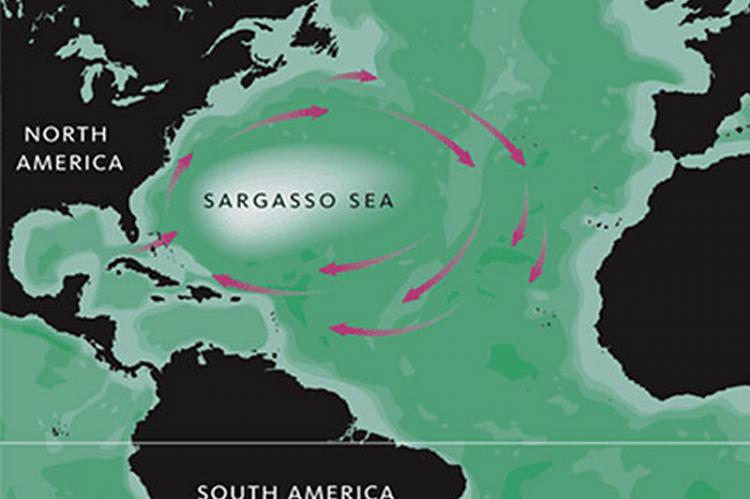Sargasso Sea Granted Protection
Vast patch of mid-Atlantic renowned for unique floating seaweeds and rich biodiversity. Area previously lacked regional organization responsible for its conservation.
The Sargasso Sea, a vast patch of mid-Atlantic Ocean renowned for its unique floating seaweeds, is finally being granted protection. The governments of Bermuda, the Azores, Monaco, United Kingdom and the United States have agreed to work together in order to conserve the unique habitat and rich biodiversity of this ecological crossroads.
The declaration, signed in Bermuda’s capital of Hamilton, promises to seek protection using international bodies that regulate areas beyond national jurisdiction, such as the International Maritime Organisation, regional fisheries authorities and the Convention on Migratory Species. Unlike the Mediterranean, the Northeast Atlantic or Southern Ocean, the Sargasso Sea lacks a regional organization responsible for its conservation. The Hamilton Declaration will enable the creation of a Sargasso Sea Commission to help minimize adverse effects of shipping and fishing in the area
Historic
“This is a truly historic occasion,” says David Freestone, Executive Director of the Sargasso Sea Alliance. “It is the first time an international alliance has been formed to protect an iconic high seas ecosystem, using existing legal international frameworks.”
The sea’s long-term viability and health is undermined by a range of threats including wastewater discharge from ships, pollution, fishing, harvesting of Sargassum algae for fertilizer and biofuel production, seabed mining, climate change and ocean acidification.
“The Hamilton Declaration represents a rare oasis of joint voluntary action to protect this high seas gem,” said Kristina Gjerde, IUCN Senior High Seas Policy Advisor. “Strong leadership in protecting and managing the Sargasso Sea should send an important message to the international community that now is the time to come together to protect wildlife throughout our global ocean commons,” she added.
Some 30 species of whales, dolphins and porpoises breed, live in or migrate through the Sargasso Sea, as do tuna, turtles, sharks, rays and the European and American eels. It has also been discovered that juvenile loggerhead sea turtles utilize the Sargassum as cover from predation until they mature. The sea’s floating Sargassum seaweed shelters a diversity of species including the endemic the Sargassum anglerfish.


